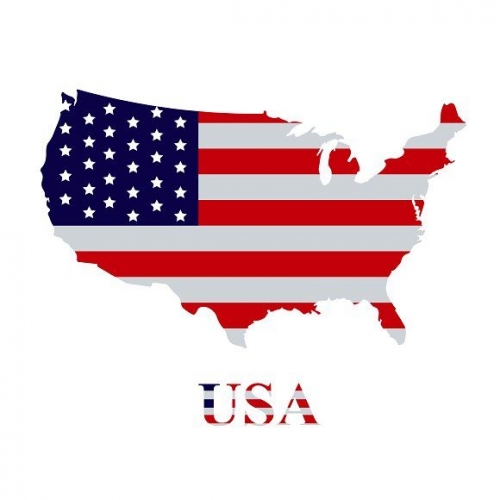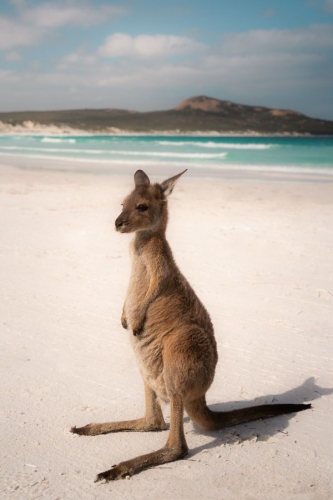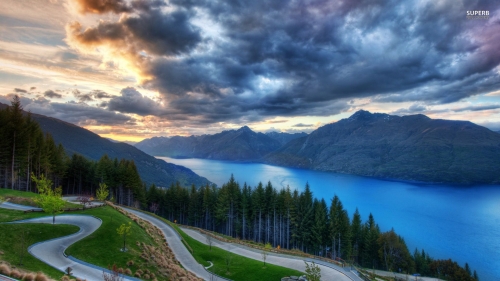immigration to America
In 1862, the Homestead Act offered free land in western areas of the USA.The Ellis Island Immigration Station was the main point of entry. All new arrivals were interviewed on the island and given a medical examination. About 2% were denied admission and sent back to their own countries because of disease, a criminal background or mental illness.In 1921, the American Congress passed a law to slow down the pace of immigration. Since then, immigration laws have become stricter and it is now more difficult to settle in America.The difficulty in obtaining legal residence has led to a serious problem of illegal immigration. Today, there are about 11 million illegal immigrants in the USA.

Australia
Australia is an island continent in the southern hemisphere between the Indian and Pacific Oceans. It is the smallest continent in the world, but the sixth largest country.
Australia became part of the British Commonwealth in 1901. A referendum to change its status, from a Commonwealth headed by the British monarch to an independent republic, was defeated in 1999.More than a third of the country is desert and much of it is uninhabited.The population of Australia is comparatively small, and 86% of Australians live in metropolitan cities such as Sydney.Australia is one of the world’s most ethnically diverse nations. Australia is a major exporter of natural resources, energy and food.

NEW ZEALAND
New Zealand is an island country in the southwestern Pacific Ocean. It consists of two main landmasses—the North Island and the South Island and more than 700 smaller islands. New Zealand's capital city is Wellington, and its most populous city is Auckland.Today, the majority of New Zealand's population of 5 million is of European descent.. The official languages are English, Māori.The service sector dominates the national economy, followed by the industrial sector, and agriculture.

Canada
Canada is an enormous country covering almost the entire northern half of the North American continent.Canada is a rugged country with a lot of uninhabitable land.Approximately 90% of Canadians live along the border with the United States.About 50% of Canadian people are descendants of British and French.
Today, most new immigrants come from Asia. The original inhabitants of Canada, the Inuit People and First Nations, now account for less than 4% of the population. Canada is a bilingual country. English and French are the official languages and they have equal status.
Renewable energy
Renewable energy comes from natural resources, such as sunlight, wind, water and geothermal heat.
SOLAR ENERGY
It has been estimated that, using solar energy, just a small part of the Earth’s desert areas could supply all of the world’s energy requirements.
WIND ENERGY
Wind energy is captured with wind turbines.
Wind turbines are now a common sight in European countries and the USA.
BIOENERGY
The organic matter that makes up plants is called ‘biomass’.
Biomass can be burnt, decomposed or fermented to produce electricity, transportation fuels or chemicals, but production rates are slow.
HYDROPOWER ENERGY
Hydropower energy comes from moving water. The volume of the water and the change in elevation from one point to another determine the amount of hydroelectric energy created.
GEOTHERMAL ENERGY
Geothermal energy is the Earth’s internal heat. It can be used for electric power production, the heating and cooling of buildings, etc.
SUSTAINABLE BUSINESS
A sustainable or green business is a business that tries to reduce its impact on the environment while maintaining a profit.Most companies consider green practices to be an important factor in remaining competitive and many also state that they contribute to company profits.
REASONS FOR GOING GREEN
REDUCED ENVIRONMENTAL RISK
A lot of companies are beginning to consider the effect they have on the environment. For example, they are abandoning investment in dirty energy sources and investing in renewable energy.
GREEN PRODUCT DEMAND
The demand for environmentally-friendly services and products has grown enormously over the last few years.
COMMUNITY ENGAGEMENT
Community involvement is important for many companies and green practices enhance public image and community relations.
ATTRACTING TALENT
Environmentally-conscious business practices help attract and retain the best employees by increasing employee satisfaction and pride in the workplace.
ATTRACTING INVESTORS
There is a growing interest in sustainability among investors, which can benefit companies that are committed to the environment and the local community
SAVING MONEY
Green business practices can make the company more efficient and reduce costs.
GREEN INTERNET
Almost every day new businesses are being created that use the internet as their foundation.The trend is expected to continue as the global online population rises and more of ourdaily activities are carried out online. The rapid growth and use of the internet is creating adramatically increased demand for electricity. According to Greenpeace, the energy footprintof the IT sector is already estimated to consume approximately 7-12% of global electricity.While thecost of electricity based on fossil fuels isrising sharply, the cost of renewable energyis falling. In addition, companies are startingto change as they realise that their customersvalue sustainability.
india
India is the seventh largest and the second most populated country in the world. It is home to more than one billion people and has a multilingual and multi-ethnic society.India has a population of about 1.3 billion.t has a very young population with about 45% of the people under the age of 25.
Indian people are ethnically and culturally diverse and religion plays an important role in society. About 80% of Indians practise Hinduism.The country is multilingual. Hindi is the official language, but English has the status of ‘subsidiary official language’ and is used extensively in business and education.The country has capitalised on its large, educated English-speaking population to become a major exporter of information technology services, business outsourcing services and software workers. It is now the world’s sixth largest economy. Even so, poverty in India remains widespread, particularly in rural areas and among the young.
At least 18 million children work on the streets of urban India and about 50% of Indian children between the ages of 6-18 do not go to school.






